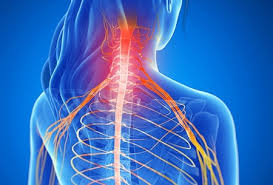Page Contents
Introduction
Neuropathic pain is a complex, chronic pain state that usually arises from nerve damage or dysfunction. Unlike other types of pain, it is not a direct result of an injury or inflammation but rather a consequence of abnormal processing of pain signals by the nervous system. Understanding neuropathic pain is crucial because it affects millions of people worldwide, leading to significant physical, emotional, and social impacts.
What is Neuropathic Pain?
Neuropathic pain, often described as a burning or shooting pain, occurs due to damage or disease affecting the somatosensory nervous system. This type of pain is different from nociceptive pain, which is caused by tissue injury and is the body’s natural response to harmful stimuli. Neuropathic pain can persist for months or even years, making it a chronic condition that requires specialized treatment approaches.
Causes of Neuropathic Pain
Nerve Damage and Injury
Neuropathic pain often results from direct injury to nerves. This can happen due to accidents, surgeries, or conditions like carpal tunnel syndrome, where prolonged pressure on a nerve causes damage.
Medical Conditions Leading to Neuropathic Pain
Several medical conditions can lead to pain. Diabetes is a significant cause, leading to diabetic neuropathy. Multiple sclerosis, a disease affecting the central nervous system, can also cause neuropathic pain.
Infections and Neuropathic Pain
Certain infections can damage nerves, leading to neuropathic pain. For example, shingles, caused by the varicella-zoster virus, can lead to postherpetic neuralgia, a painful condition affecting nerve fibers and skin.
Chemotherapy-Induced Neuropathic Pain
Chemotherapy drugs can damage peripheral nerves, resulting in chemotherapy-induced peripheral neuropathy (CIPN). This condition can significantly affect cancer patients’ quality of life, requiring careful management.

Symptoms of Neuropathic Pain
Common Symptoms
Symptoms of pain include spontaneous pain, pain from stimuli that don’t usually cause pain (allodynia), and exaggerated pain responses (hyperalgesia). Patients often describe the pain as burning, stabbing, or tingling.
Chronic vs. Acute Neuropathic Pain
While acute neuropathic pain is temporary and resolves with treatment, chronic pain persists long-term, often becoming a debilitating condition.
Psychological Impact of Neuropathic Pain
Chronic pain can lead to significant psychological distress, including anxiety, depression, and sleep disturbances. The persistent nature of the pain can severely impact an individual’s quality of life and mental health.
Diagnosing Neuropathic Pain
Medical History and Physical Examination
Diagnosis begins with a detailed medical history and physical examination. Understanding the patient’s symptoms, medical history, and potential nerve injury causes is crucial for accurate diagnosis.
Diagnostic Tests and Imaging
Diagnostic tests like electromyography (EMG) and nerve conduction studies (NCS) help assess nerve function. Imaging studies, such as MRI or CT scans, can identify structural issues causing nerve compression or damage.
Differential Diagnosis
Differentiating pain from other types of pain is essential. Conditions like fibromyalgia, which can present with similar symptoms, require distinct treatment approaches.
The Science Behind Neuropathic Pain
Pathophysiology of Neuropathic Pain
Neuropathic pain involves abnormal nerve signaling and changes in the nervous system’s structure and function. Damaged nerves can send incorrect signals to the brain, resulting in pain perception without an external stimulus.
Role of the Nervous System
The central and peripheral nervous systems play critical roles in pain. Damage to nerves in these systems can lead to persistent pain signals, even after the initial injury has healed.
Neurotransmitters and Pain Perception
Neurotransmitters like glutamate and substance P are involved in pain signaling. Changes in their levels and receptor activity can enhance pain perception, contributing to the chronic nature of pain.
Common Myths About Neuropathic Pain
Misconceptions and Facts
There are many myths about neuropathic pain, such as the belief that it is purely psychological or that it always results from diabetes. Dispelling these myths is important for proper understanding and treatment.
Importance of Accurate Information
Accurate information helps patients and healthcare providers manage pain more effectively. Understanding the true nature of the condition can lead to better treatment outcomes and patient support.
Treatment Options for Neuropathic Pain
Medications
Over-the-Counter Pain Relievers
While OTC pain relievers like acetaminophen and ibuprofen can help with mild pain, they are often insufficient for neuropathic pain.
Prescription Medications
Prescription medications, including anticonvulsants and antidepressants, are more effective for managing pain. Drugs like gabapentin and pregabalin specifically target nerve pain.
Non-Pharmacological Treatments
Physical Therapy
Physical therapy can help improve mobility and reduce pain through exercises and techniques designed to strengthen muscles and enhance nerve function.
Cognitive Behavioral Therapy
CBT helps patients manage the psychological impact of chronic pain, teaching coping strategies and altering negative thought patterns associated with pain.
Acupuncture
Acupuncture, an ancient Chinese medicine practice, has been shown to alleviate neuropathic pain in some patients by stimulating specific points on the body.
Innovative Treatments and Therapies
Neuromodulation Techniques
Neuromodulation involves electrical stimulation of nerves to reduce pain. Techniques like spinal cord stimulation (SCS) and peripheral nerve stimulation (PNS) are increasingly used for pain management.
Regenerative Medicine
Regenerative medicine, including stem cell therapy and platelet-rich plasma (PRP) injections, is being explored for its potential to repair nerve damage and reduce pain.
Emerging Research and Clinical Trials
Ongoing research and clinical trials are exploring new treatments and therapies for pain. Advances in genetics and molecular biology may lead to targeted therapies in the future.
Lifestyle Changes to Manage Neuropathic Pain
Diet and Nutrition
A healthy diet rich in vitamins and minerals can support nerve health and reduce inflammation, potentially alleviating some pain symptoms.
Exercise and Physical Activity
Regular physical activity helps maintain overall health and can reduce pain. Low-impact exercises like swimming and yoga are particularly beneficial for pain sufferers.
Stress Management Techniques
Stress can exacerbate pain. Techniques like mindfulness, meditation, and deep-breathing exercises can help manage stress and reduce pain perception.
Living with Neuropathic Pain
Coping Strategies
Living with neuropathic pain requires developing effective coping strategies. This includes pacing activities to avoid overexertion, using heat or cold packs for pain relief, and finding comfortable positions to alleviate discomfort.
Support Systems and Resources
Support from family, friends, and healthcare professionals is crucial for managing pain. Joining support groups or seeking counseling can provide emotional support and valuable information.
Patient Stories and Experiences
Sharing experiences with others who have neuropathic pain can offer insights into coping mechanisms and treatment options that have worked for different individuals.
Preventing Neuropathic Pain
Early Detection and Management
Early diagnosis and prompt treatment of conditions that can cause nerve damage, such as diabetes and infections, can help prevent or minimize the development of pain.
Protective Measures
Taking preventive measures like avoiding repetitive movements that can lead to nerve compression or injury can reduce the risk of developing neuropathic pain.
Education and Awareness
Educating oneself about the signs, symptoms, and risk factors of pain increases awareness and facilitates early intervention, improving overall outcomes.
Impact of Neuropathic Pain on Quality of Life
Daily Life Challenges
Neuropathic pain can impact daily activities such as walking, driving, and working, affecting overall quality of life and independence.
Emotional and Social Implications
Chronic pain can lead to isolation, depression, and anxiety. Addressing these emotional and social aspects is essential for comprehensive pain management.
Future Directions in Neuropathic Pain Management
Advances in Medical Research
Ongoing research aims to better understand the underlying mechanisms of neuropathic pain and develop more targeted and effective treatments.
Potential Breakthroughs
Advancements in neurotechnology, pharmacology, and regenerative medicine hold promise for breakthroughs in neuropathic pain management, offering hope for improved quality of life for patients.
Conclusion
In conclusion, neuropathic pain is a complex condition that arises from nerve damage or dysfunction, leading to chronic and often debilitating pain. Understanding its causes, symptoms, and available treatments is crucial for effective management and improved quality of life. By combining medical interventions with lifestyle changes and supportive care, individuals can better cope with pain and regain control over their lives.





